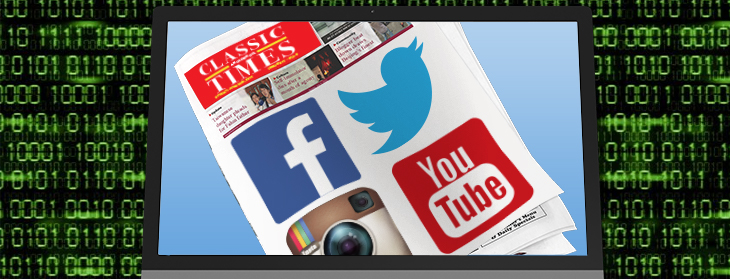
Your news source? Likely convenient, biased, and personality driven.
Posted On June 22, 2017
When’s the last time you read a newspaper?
I don’t mean an internet news source, or even a website run by a newspaper. I’m talking about an actual ink-and-paper newspaper – one you can use to line your birdcage or wrap fish after you’re finished with it.
If you can’t remember, you’re not alone. Aside from a brief respite in 2013, newspaper readership has been steadily declining year-over-year for over a decade. The drop-off is particularly acute among the younger generations. According to the Pew Research Center, less than 20 percent of Americans ages 18 to 34 read daily newspapers – down from more than 40 percent in 1999.
It’s easy to see why, when there’s a plethora of news sources at one’s fingertips for free on the internet. But the place most young people get their news today wasn’t designed to be a news source at all.
When’s the last time you checked your social media pages?
According to a 2015 study by the American Press Institute, 88 percent of millennials have been getting their news from Facebook at least occasionally, 83 percent from YouTube and 50 percent from Instagram. Fifty-seven percent of those who said they got news from Facebook did so at least once a day, and 44 percent said they checked it several times a day.
Twitter, though on the decline, is also used by many – particularly for breaking news and sports. In a recent Alabama Sports Writers Association forum on millennial news consumption, Twitter was hailed by participating millennials as their first stop for sports news. The reasons: It’s the most up-to-date – often real-time – and it allows readers to feel like they can get to know the writers, the savviest of which will allow their personalities to shine through the medium.
This is important, as one of the panelists surmised that with the exception of a couple of the highest-profile national outlets, millennials are more likely to follow individual writers than a particular publication.
While news consumption via Twitter can be targeted through choosing who to follow, it’s essentially accidental on Facebook. According to the API study, the top reason most millennials – nearly 80 percent — say they use Facebook is to see what their friends are doing or talking about. Some of that will be their everyday lives and family activities. Some of that will be references to pop culture, music, sports or other forms of entertainment. Some of it will be pictures of their food. And some of it will be current events – news.
By and large, using social media to get the news forces one to rely on friends to be curators of what’s important instead of professional journalists. But while it’s haphazard, it doesn’t require a subscription – unless a post links to a site buried behind a paywall – and it doesn’t force readers to even bother to look for it. It’s delivered to them while they hang out, digitally, with their friends.
Unfortunately, that delivery is often fueled by clickbait, sensationalized or misleading headlines that are more likely to get shared by unsuspecting users who fail to fact-check. And because Facebook tailors your news feed based on past consumption, shares and likes, it’s possible that your feed can, over time, become one-sided enough to serve only to confirm your particular biases.
But that, as they say in the news biz, is a column for another day.